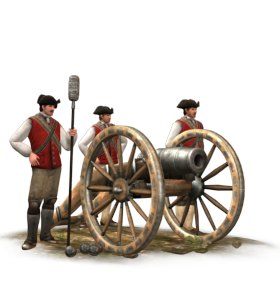Difference between revisions of "24-lber Howitzer Foot Artillery (ETW Unit)"
(→Factions) |
Tango12345 (talk | contribs) m (updating category) |
||
| Line 12: | Line 12: | ||
*[[Great Britain (ETW Faction)|Great Britain]] | *[[Great Britain (ETW Faction)|Great Britain]] | ||
*[[United Provinces (ETW Faction)|United Provinces]] | *[[United Provinces (ETW Faction)|United Provinces]] | ||
| − | [[Category:Artillery]] | + | |
| + | [[Category:Empire Total War Units]] | ||
| + | [[Category:ETW Artillery]] | ||
Revision as of 06:10, 14 July 2011
Overview
Howitzers fall somewhere between guns and mortars, the other main artillery types. They have a limited mobility, like guns. Like mortars, they do not fire straight at the target, but send shots high into the air to plunge down on a target (and over anything in the way). By angling the barrel and changing the propellant charge used, howitzers have an impressive flexibility in shell trajectories. Experienced crews can lob explosive shells and incendiary rounds with great accuracy into a “beaten zone”, making life utterly miserable and very short for anyone within it. In close action, they can fire canister rounds directly into enemy formations, like giant sawed-off shotguns.
The term foot artillery applies because the gunners walk into battle alongside the draft animals. Like all artillery, the rating of these howitzers refers to the nominal weight of shot fired; loading the heavier pieces made for strong gunners!
Historically, howitzers – like many other artillery pieces – were far from standardized weapons in the 18th Century. Shells and spare parts made in one foundry did not always fit another foundry’s pieces, even if the caliber was nominally identical and the two guns were part of the same battery in the field. It took a good deal of effort and argument to get foundries to standardize barrels and ancillary equipment, even in a single country.
